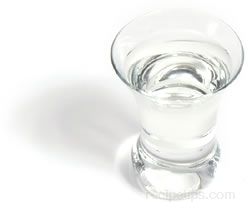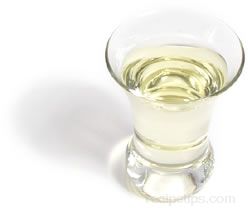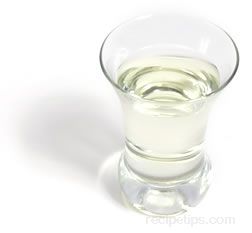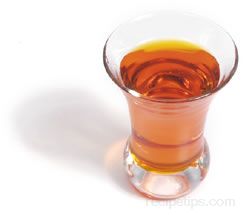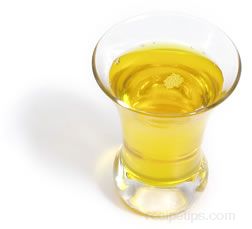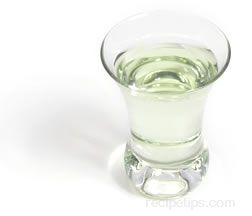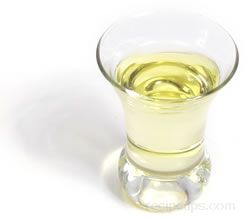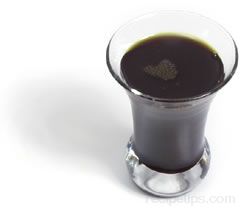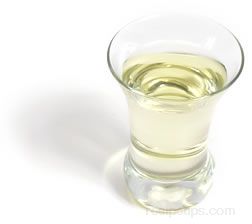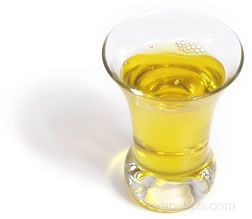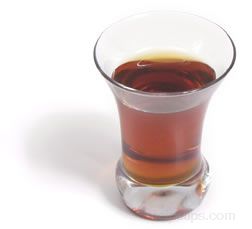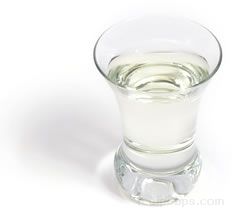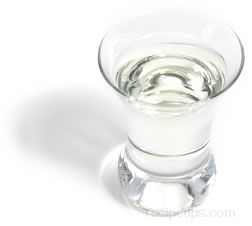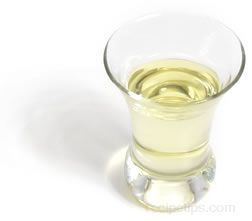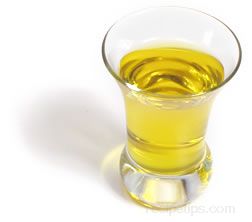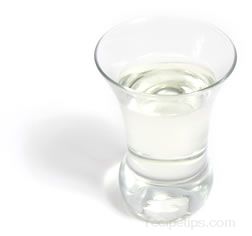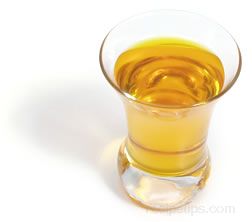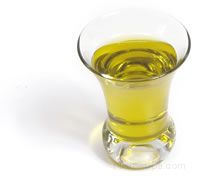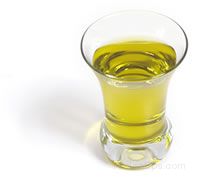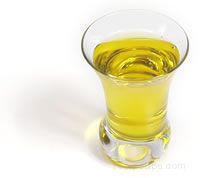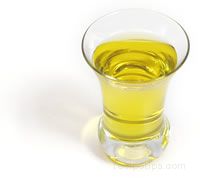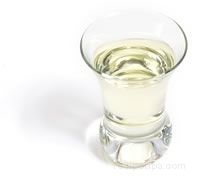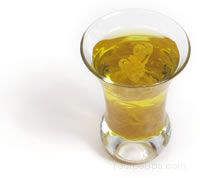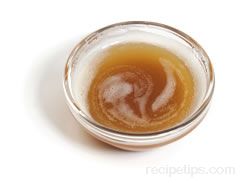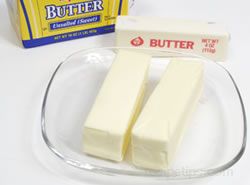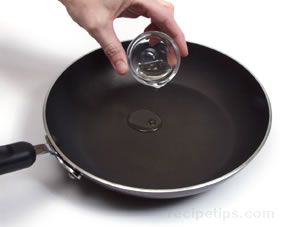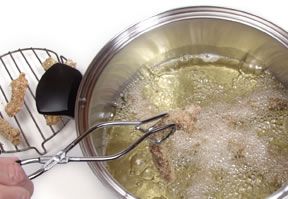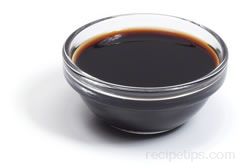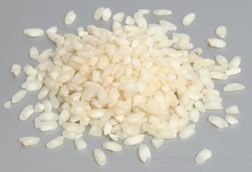Oil Extraction Methods | Types of Edible Liquid Fats
Olive Oil Basics | Types of Olive Oil
|
There are numerous edible oils obtained from plant sources that are used for hundreds of culinary, pharmaceutical, and cosmetic products. Some oils are obtained through refining processes that usually involve heat or chemicals to extract the oil, resulting in a bland, but stable product, with a lengthy shelf life. Other oils are obtained simply through pressing in order to release the oil from the fruit, seed, or nut. Oils obtained in this manner are known as cold pressed or cold extraction oils and are much more flavorful than refined oils. They are also more expensive, have a shorter shelf life, and do not hold up as well for high heat cooking as refined oils, but there is no substitute for the flavor they provide. |
| Cold Extraction Methods | |
| Cold Pressed | Cold pressing refers to oils obtained through pressing and grinding fruit or seeds with the use of heavy granite millstones or modern stainless steel presses, which are found in large commercial operations. Although pressing and grinding produces heat through friction, the temperature must not rise above 120ºF for any oil to be considered cold pressed. The maximum temperature for cold pressed olive oil is somewhat lower. Olive, sesame, peanut, and sunflower are among the oils obtained from cold pressing. (Highly refined versions of these oils are also produced.) Cold pressed oils retain all of their flavor, aroma, and nutritional value. |
| Vacuum Extraction | Vacuum extraction is another method of cold extraction that produces oils with an expeller process. The process occurs in an atmosphere with no oxygen or light. The temperature during the expeller process may be as low as 70ºF. |
| Heat Extraction Methods | |
| Expeller Pressed | Expeller pressing is like cold pressing except that extreme pressure is added during the pressing. As much pressure as 15 tons per square inch is used to squeeze the oil from the fruit or seeds. The high pressure also produces high heat (as high as 300ºF) through friction, so the oils produced with the expeller process cannot be considered cold pressed. The oils obtained with this method retain much their flavor, aroma, and nutritional value, but not to the extent of cold pressed oils. |
| Solvent Extraction | Chemical solvents are used to extract oil, which is then boiled to eliminate most of the solvents. Further refining such as bleaching, deodorizing, and heating to high temperatures cleanses the oil, resulting in a product that has very little of the original flavor, aroma, or nutrients contained in the seeds or fruit before processing. Most of the oils produced with this method have a high smoke point and a long shelf life. |
|
The edible fats described below are from plant sources. They are usually in a liquid form at room temperature, unlike animal fats and hydrogenated plant oils which are solid or semisolid at room temperature. |
|
Like many of the other oils obtained from nuts, almond oil is very expensive so the demand for it is limited. It has a subtle toasted almond aroma and flavor and is suitable for salad dressings and as an addition to sauces. It is often used in desserts however, unlike almond extract, almond oil is not concentrated enough to provide a strong almond taste to sweets. It has a high smoke point so it may be used for high heat cooking. Almond oil is a good source of monounsaturated fat and vitamins A and E and is often used as a food supplement and a body oil. It is most often available in gourmet shops and in some food stores. Common Uses: salad dressings, ingredient for sauces, desserts, nutritional supplement, body oil |
|
Apricot kernel oil is obtained from the dried kernels of the apricot tree. The oil is usually expeller pressed from the kernels and some brands may use additional refining procedures, which does not allow the oil to be labeled cold pressed or unrefined. It is high in monounsaturated fat and contains no trans-fatty acids, so it is a very healthy oil. It is suitable for high heat cooking methods, such as sautéing and pan-frying, and the mild flavor makes it a good choice for salad dressings. It is also popular as a body oil. Apricot kernel oil is most often available in gourmet shops and in some food stores. Common Uses: cooking, salad dressings, body oil |
|
Argan Oil Argan oil is obtained from the nuts grown on argan trees, which are native to southwestern Morocco. The argan tree is not common in any other area of the world, although efforts are underway to grow this variety of tree in other countries. The tree is twisted and gnarled in appearance with thorny branches yielding a green fruit containing a hard-shelled interior that covers several almond-like nuts. The oil obtained from the nuts is expensive due to the slower traditional methods of production. 20 to 30 hours of work is required to produce one liter of oil. After processing, the remaining byproduct is a deep brown, thick paste referred to as "amlou", which is similar to tahini or peanut butter and is most often used as a dip or spread that is served over bread, toast, or crackers. Argan oil has a golden yellow color with a slight reddish tint and a pleasing nutty aroma. It provides a smooth, roasted nut flavor somewhat similar to hazelnuts, but with a somewhat sharp overtone. It is available in gourmet and specialty shops as well as Middle-Eastern markets. Common Uses: cooking, salad dressings, condiment |
|
Avocado oil has a light, but unique flavor that makes it an excellent choice for salad dressings or for use as a condiment. It is usually produced from avocados that are damaged or not aesthetically pleasing. Refined avocado oil has the highest smoke point of any plant oil, so it is useful for high heat cooking. It is a good source of monounsaturated fat and vitamin E, which makes it nutritionally beneficial. Avocado oil can be found in some specialty shops. Common Uses: high heat cooking, salad dressings, condiment |
|
Canola is the marketing name for oil that is obtained from rapeseeds. Bright yellow rape crops can be spotted in fields in many parts of Europe and North America. The oil is popular in Japan, China, and India and it is the most widely used oil in Canada. It is also popular in the northern United States and is gaining popularity throughout the remainder of the country. Canola oil is also known as LEAR oil, or "Low Erucic Acid Rapeseed" oil. It has the lowest level of saturated fat of any edible oil and has one of the highest levels of heart-healthy monounsaturated fat. It also contains a high level of omega-3 fatty acids, which is a polyunsaturated fat that helps to decrease the risk of heart disease and lowers blood pressure. Because it is mildly flavored and inexpensively priced, canola oil is an excellent choice for cooking or baking, or as an ingredient for salad dressings. Common Uses: frying, baking, salad dressings |
|
Chile oil is derived from hot, red chiles that have been steeped in vegetable oil to extract the flavor and heat. If kept at room temperature, chile oil will last for at least 6 months and the flavor and heat will last somewhat longer if it is stored in the refrigerator. It is most often used as a flavoring and should not be used as a cooking oil because the strong flavor will overpower the food. It is very popular in the creation of Chinese dishes. Common Uses: flavoring ingredient, condiment |
|
Corn oil is produced from the germ of corn kernels and it is very high in polyunsaturated fat. Refined corn oil is one of the best oils for frying because it has a high smoke point. It has a light golden color and is almost tasteless and odorless so it is also a good choice for baking. It can be used for salad dressings when oil with little or no taste is required. Corn oil is often used in the manufacture of margarine. Common Uses: frying, baking, salad dressings, margarine and shortening production |
|
Cottonseed Oil Cottonseed oil is pressed from the seeds of the cotton plant. It is almost always blended with other oils for the creation of various vegetable oils and it is also used in the manufacture of margarine, salad dressings, and commercially prepared fried products. Common Uses: margarine and shortening production, salad dressings, commercially fried products |
|
Oil obtained from flax seeds has a buttery flavor, which makes it a good choice for salad dressings or as a topping for potatoes and vegetables. Also known as linseed oil, flax seed oil has the highest level of the polyunsaturated fat, omega-3 fatty acid, which helps guard against heart disease. Because of this, flax seed oil is more often used as a nutritional supplement than for cooking. Common Uses: nutritional supplement, salad dressings, condiment |
|
Grape seed oil is a byproduct of the winemaking industry. The majority of oil extracted from grape seeds is produced in France, Switzerland, and Italy, but there are also a few producers in the United States. Most of the grape seed oil sold in the United States has very little flavor, but there is a small quantity, mostly sold in gourmet shops, that actually has a grapey flavor and aroma. The subtle flavor of grape seed oil is well suited for many types of salads because the oil will not overpower the other ingredients. It may also be combined with stronger flavored, more expensive oils, which makes them more economical to use. Refined grape seed oil has a high smoke point so it is an excellent choice as a cooking oil, especially when sautéing or frying. It can be stored without refrigeration if the storage temperature does not climb above 70ºF. Common Uses: cooking, salad dressings, margarine production, cosmetics |
|
Hazelnut oil has a strong, roasted hazelnut flavor and is generally used as a flavoring for baked goods and for some sauces. It is excellent when brushed on fish and it works well as a marinade. This brown colored oil can also be added to mildly flavored oils to create rich tasting salad dressings. Hazelnut oil is expensive and it is usually found in gourmet shops, although some food stores may have a supply. If it is stored in a cool dark cupboard, it will remain fresh for as long as 3 months, but it is best to store it in the refrigerator to prevent it from becoming rancid. If refrigeration causes the oil to solidify, it can be restored to a liquid state by leaving it at room temperature for an hour or two. Hazelnut oil is popular in France, which is where most of it is produced. Common Uses: salad dressings, baking, flavoring ingredient, condiment |
|
Macadamia Nut Oil A type of oil obtained from the nut of the macadamia tree. The tree is native to Australia, which leads the world in production of the nut and the oil. Hawaii, Kenya, South Africa, and Guatemala are other major producers. Most brands of the oil are created with a cold press method in which no chemicals or solvents are used as an aid in extracting the oil, ensuring that the oil is the best tasting possible. The oil has the same rich, buttery flavor of the popular nut and is excellent when used in salads, as a condiment, or in cooking. The high smoke point makes it a good choice for sautéing and frying. One of the best features of macadamia nut oil is its nutritional qualities. It contains the highest level of heart-healthy, monounsaturated fat of any edible oil and it has an exact balance of omega 3 and omega 6 fatty acids. The high level of antioxidants slows rancidity and allows the oil to be kept for up to two years without refrigeration. Common Uses: cooking, flavoring ingredient, condiment, salad dressings, marinades, skin care |
|
Mustard Oil Mustard oil is obtained from pressing mustard seeds from plants found in India, which differs from the more common seeds that are found in the Mediterranean. In its raw form the oil is flavorful, but extremely hot, so it should be used sparingly as a flavoring ingredient. When cooking with mustard oil, it should be brought to its smoking point before food is cooked in it. When the oil reaches the smoking point, a taste change occurs that results in a smoother mustard flavor, which will not overpower the food while it is being cooked. Mustard oil is widely used in Indian cooking and is a popular addition to salad dressings, stir-fry recipes, and marinades for meat and fish. It is available in Indian and Mid-Eastern grocery stores. It will stay fresh for 6 months or more if it is stored in the refrigerator. Common Uses: cooking, flavoring ingredient, salad dressings, marinade |
|
Olive oil has been one of the staples of the Mediterranean diet for thousands of years and its popularity is growing rapidly in other parts of the world. It is one of the most often used food oils due to its versatility as a cooking oil, its ability to enhance the flavor of many foods, and because of its proven nutritional and health benefits that may be lacking in animal fats. It is an excellent alternative to butter or margarine as a condiment or for use in food preparation. Common Uses: cooking, flavoring ingredient, salad dressings, condiment
For more on Olive Oil, use the following links: Olive Oil Basics | Types of Olive Oil
|
|
Palm Oil Palm oil is another of the few plant products that is very high in saturated fat. The oil is obtained from the pulp of the fruit of the African palm. It has a red-orange color, a strong unique flavor, and is very popular in the preparation of dishes native to the Caribbean, Central and South America, and Western Africa. A highly refined version of palm oil has very little color and is usually blended with other oils for the creation of generic vegetable fats and oils. Common Uses: cooking, flavoring ingredient, vegetable oil production |
|
Palm-Kernel Oil Palm-kernel oil differs from palm oil in that it is extracted from the kernel rather than the fruit of the palm. It has a light yellow color and it has a milder flavor. Like coconut oil, it is extremely high in saturated fat, but because the saturated fat in the oil is plant based, some studies suggest that it does not raise LDL (bad) cholesterol in the body (see coconut oil). Palm-kernel oil is often used in the manufacture of various cosmetics and in some brands of margarine. Common Uses: margarine production, cosmetics |
|
In the United States, the oil obtained from peanuts is almost clear and has a mild flavor due to the refining process that is used. The Chinese version has more of a peanut taste and aroma. Refined peanut oil has a high smoke point so it is an excellent choice for sautéing and frying. It does not absorb or transfer flavors from food during the cooking process. It is also high in monounsaturated and polyunsaturated fats, which makes it a healthy oil to use for cooking or as a base for dressings. It will keep for long periods if stored in its original container in a cool, dark place. Peanut oil is also known as groundnut oil and it should be remembered that its use in cooking might cause severe illness in people allergic to peanuts. Common Uses: cooking, salad dressings, margarine production |
|
Pine Seed Oil Pine seed oil, which is obtained from pine nuts, is one of the most expensive oils on the market, so its appeal is very limited. It is excellent in salads, as a condiment, or to dress freshly cooked vegetables. Common Uses: salad dressings, condiment |
|
Poppy Seed Oil Poppy seed oil is a good choice for salad dressings because of its smooth, subtle flavor. It also works well as a condiment, especially for dipping crusty bread. A refined version of the oil has much less flavor than the unrefined. Common Uses: salad dressings, condiment |
|
Pumpkin seed oil, which is dark, opaque, and has a thick consistency, is obtained from roasted pumpkin seeds. It has a strong flavor and is best used in combination with milder oils so that it will be suitable for cooking and for salad dressings. It can also be used undiluted to add a distinctive flavor to fish or vegetables. Common Uses: flavoring ingredient, salad dressings |
|
Rice bran oil is produced from the rice bran, which is removed from the grain of rice as it is processed. It is considered to be a very healthy alternative as a cooking oil because it is rich in vitamins, minerals, amino acids, essential fatty acids, and antioxidants. Rice bran oil has a somewhat nutty flavor that enhances the taste of foods when used in processing or preparing snack foods, fried foods, and crackers. Common Uses: cooking, flavoring ingredient |
|
The safflower, which is a member of the thistle family, grows to a height of 4 feet and is topped by beautiful yellow, gold, and orange flowers. It does well in arid climates due to its long taproot, which may reach 12 feet in length. The seeds of the safflower are used for the production of safflower oil, which has the highest level of polyunsaturated fat of any edible oil. It is low in saturated fat so it is considered to be a healthy all-purpose oil, however it contains a low level of monounsaturated fat and contains no vitamin E, so it is not as highly regarded nutritionally as many of the other edible oils. Refined safflower oil is excellent for sautéing, pan-frying, and deep-frying because of its very high smoke point. It is also suitable for salad dressings and it can be chilled without solidifying. Common Uses: cooking, salad dressings, margarine production |
|
The only steps required to produce unrefined sesame seed oil are crushing the seeds and filtering the resulting oil. The oil is light and has a mild flavor. It is very popular in Middle-Eastern and Indian cooking. Occasionally, the seeds are roasted before crushing to produce a darker oil with an intense, bold flavor. The darker version of sesame seed oil, which is extremely popular in Asian dishes, is most often used as a flavoring ingredient rather than a cooking oil. The strong, rich flavor goes a long way, so only small quantities are necessary to liven up stir-fry dishes and marinades for meat or fish. Blending dark sesame oil with mildly flavored oils will tone down the intense flavor. Sesame seed oil may also be highly refined using heat extraction methods to obtain the oil. The refined oil has much less flavor and aroma than the unrefined oil, but it has a higher smoke point so it is better for high heat cooking methods such as sautéing and pan-frying. Its subtle flavor also makes it a good choice for salad dressings and as a condiment. Common Uses: Light Oil: cooking, salad dressings |
|
Soybean oil is one the most widely used oils in the manufacture of margarine, vegetable oil, and shortening. In fact, in the United States, soybean oil is used more often than any other oil in the production of commercially prepared food items that contain oil. It has long been one of the top favorites for use in Chinese cooking. In the United States, soybean oil is highly refined and has a high smoke point, making it a good all-purpose cooking oil. The generic brands of vegetable oil are often 100% soybean oil or they may be a blend of several highly refined oils. Soybean oil is inexpensive and has several healthy attributes including high levels of polyunsaturated (including omega-3 fatty acid) and monounsaturated fats and it is fairly low in saturated fat. Common Uses: cooking, salad dressings, production of vegetable oil, margarine, and shortening |
|
Although sunflower seeds are popular as a snack, the oil extracted from the seeds is also commonly used. The seeds of the sunflower are obtained from the brown hub in the center of the flower, which has yellow petals surrounding it. The diameter of the flower can reach as large as one foot. The seeds have a tough black and white striped shell, which is often removed for easier consumption of the seeds and for adding the seeds to various recipes. When the seeds are served as a snack, many people prefer to leave the shells on and eat them with the seeds. Sunflower seeds are sold salted or unsalted. Sunflowers are grown in areas of Europe, Russia, and North America. Although Kansas is known as the sunflower state, the largest producing states are California, Minnesota, and North Dakota. Sunflower seed oil is a light yellow color and has a mild flavor. It is suitable for use as a base for salad dressings or in combination with stronger flavored, more expensive oils that can be used more economically when combined with sunflower oil. It is also used for cooking because like most other refined oils, it has a fairly high smoke point. Although most sunflower oil is obtained through a refining process, there is a small quantity that is now cold pressed rather than refined. Like olive oil, the cold pressed sunflower oil is known as "extra virgin", which also makes it much more expensive than the refined oil. It also has better flavor than the refined version and a greater level of heart-healthy oleic acid. Common Uses: cooking, salad dressings, margarine and shortening production |
|
An oil made from tea seeds, which are harvested from the tea plant (Camilla sinensis). The seeds are cold-pressed to produce the oil. Pale amber-green in color, tea oil has an herbal aroma with a somewhat sweet flavor. It is high in Vitamin E and other antioxidants, contains no trans-fatty acids, is lower in saturated fat than olive oil, and is non-hydrogenated. It is often used in Asian foods and it can be served as a salad dressing when it is combined with other flavors, such as lemon or lime. It is can be added to cooked vegetables, pasta, and stir-fry recipes. It can also be used as a base for dips, dressings, marinades, and sauces. Tea oil has a high smoke point so it can withstand high heat cooking without burning. Common Uses: cooking, salad dressings, sauces, condiment, marinade |
|
Truffle oil is produced by infusing a high quality oil, such as extra virgin olive oil, with the flavor from truffles (a rare fungus that grows underground). The truffles are soaked in the oil until the flavor is released, resulting in a gourmet oil that is very strong in aroma and flavor. Because of its strength, only a few drops are required to add the earthy truffle flavor to a variety of foods, such as meat, fish, pasta, risotto, salads, and sauces. Truffle oil may lose some of its intense flavor and aroma if it is stored for long periods of time. Common Uses: flavoring ingredient |
|
Vegetable oil usually consists of a highly refined blend of various oils such as soybean, corn, and sunflower or it may consist of only one type of oil. The label may or may not list the types of oil contained within the blend, so the consumer will often never know exactly what they are purchasing. The refining process usually results in oil that has a high smoke point and a color ranging from almost clear to golden yellow, but with very little taste or aroma. This makes vegetable oil a good all-purpose oil for sautéing, frying, and baking, but it should not be used as a condiment or for salad dressings. Common Uses: cooking, baking |
|
Walnut oil, which is cold pressed from the meat of dried walnuts, has a strong and distinctive walnut flavor. It is generally used as a flavoring for baked goods and for some sauces. It can provide a bold flavor to salad dressings or it can be added to mildly flavored oils to create a subtle taste. It can be used for sautéing and pan-frying, but the high heat will diminish the flavor of the oil and the unrefined version does not have a particularly high smoke point. Walnut oil is expensive and it is usually found in gourmet shops, although some food stores may have a supply (usually a highly refined version with less flavor and a higher smoke point). If it is stored in a cool, dark cupboard, it will remain fresh for as long as 3 months, but it is best to store it in the refrigerator to prevent it from becoming rancid. If refrigeration causes the oil to solidify, it can be restored to a liquid state by leaving it at room temperature for an hour or two. Like other oils obtained from nuts, walnut oil is very popular in French cooking. Common Uses: salad dressings, flavoring ingredient, condiment, cooking |
|
Wheat germ oil is obtained from the embryo of the wheat kernel. It is a rich source of vitamin E and is often used as a health supplement. It can also be used to create delicious salad dressings and it is surprisingly good when it is added to freshly cooked pasta. Common Uses: salad dressings, condiment, nutritional supplement |
|
Three basic grades of olive oil are most often available to the consumer:
In addition to the basic grades, olive oil differs from one country or region to another because of the types of olives that are grown, the environmental factors of the area, the harvesting methods, the time of the harvest, and the pressing techniques. These factors all contribute to the individual characteristics of the olive oil. Some of the characteristics found in olive oils produced in some of the major olive growing areas are:
|
|
Olive Growing Most countries that line the Mediterranean Sea produce olive oil in varying quantities. Spain, Italy, and Greece represent more than three-fourths of the total olive oil output in the world.
There are several other countries outside the Mediterranean that are suitable for olive growing and olive oil production. These include South Africa, Chile, Argentina, Australia, New Zealand, and the United States (nearly all of the production is based in California, because of its Mediterranean climate). Olive trees thrive in climates with mild winters and hot summers. They cannot tolerate a temperature of less than 10ºF, and a lengthy spell of freezing weather can ruin any chances for a decent crop. Olive trees are very hardy in hot summer temperatures and they are drought tolerant. The trees grow best in shallow soil. As ripening occurs, most olives change from green to purple to dark red to black. About 10 pounds of olives are required to produce 1 quart of olive oil. Most olive trees can provide enough olives to produce about 3 quarts of oil and some trees may provide 3 times that quantity. |
|
Harvesting Olives must be harvested at the correct time in order to obtain the greatest quantity of oil without an increase in the acidity level. The experienced olive grower knows the exact time when the olives should be harvested. Olives that are picked too soon may contain no oil. Olives contain oil soon after they have turned a light green color and the volume of oil increases as they become darker green and then change to purple or black. If the olives are allowed to ripen too long, the volume of oil will continue to increase as will the acidity level, which has a negative impact on the quality. In the Northern Hemisphere, olives are generally harvested from late October through February. Harvesting usually occurs in November for most of the olive crop in Spain. October is the beginning of harvest time in the Tuscany region of Italy when the olives are still solid and green. In Greece, some olive varieties may be picked in October when they are still green, while other varieties may be left until February when they are at the peak of ripeness and bursting with oil. Harvesting the olives has always been a labor intensive and time consuming process. Hand picking is still the best method for harvesting an entire crop because it causes the least amount of bruising to the fruit, (fruit that is bruised will have a negative impact on the resulting oil) but it is not very practical for large operations. Some individual growers, known as single estate producers, still harvest olives by hand picking to achieve the highest possible quality in the finished oil. Harvesting methods and the time of the harvest vary greatly depending on the country or region where the olives are grown, the type of olives that are grown, and the climatic conditions. Some of the various harvesting methods include:
|
|
Pressing Olives are usually pressed within 24 hours if the weather is hot. If the weather is cooler, the pressing may occur within 72 hours of harvesting. In many olive growing countries, the olives must be pressed within 72 hours to qualify as virgin oil. The longer the time between harvesting and pressing, the greater the chance that the olives will begin to ferment and the greater the chance that the resulting olive oil will not be the top quality possible. In addition to the limited time available between harvesting and pressing, to be considered virgin or extra virgin, the oil must be obtained with the use of mechanical processes only. If heat and/or chemical processes are used to produce the olive oil, it cannot be called virgin or extra virgin. A process, known as the "first cold pressing," yields olive oil with the best flavor and in most cases the highest quality possible. After harvesting, any remaining leaves are removed, the olives are washed, and are ground into a pulp using a revolving mill, usually constructed with stainless steel. Granite millstones were traditionally used before modern equipment became widely available. The entire olive, including the pit, is pressed to produce the oil. Some single estate producers, collect the oil that results from just the initial crushing while many other producers use an additional step to extract more oil. The olive pulp is placed on mats constructed with hemp or polypropylene that are stacked and then pressed to squeeze the pulp. Oil and water filter through the mats to a collection tank below. The water and oil are then separated in a centrifuge. Regardless of the method used for the first pressing, the temperature of the oil during production is extremely important in order to maintain the distinct characteristics of the oil. If the temperature of the oil climbs above 86ºF, it will be damaged and cannot be considered cold-pressed. If the natural acidity of cold-pressed oil is less than 1% oleic acid, it is known as extra virgin olive oil. If the acidity is between 1% and 3.3%, the oil is called virgin olive oil. Any oil obtained from the first cold pressing that has a natural acidity above 3.3% cannot be sold as virgin olive oil. It is usually sent to a refinery to reduce the acidity and eliminate any other objectionable characteristics. Up to 90% of the oil is obtained from the olives during the first cold pressing. The remaining 10% is extracted in refineries that use heat and/or chemical processes to remove the oil. |
|
Extra virgin olive oils are produced from the first pressing, which is performed within 24 to 72 hours of harvesting. Mechanical or hand pressing are the only methods used to obtain extra virgin olive oil. No heat or chemical processes are used. The oil obtained from the first pressing is the only olive oil that can be classified as extra virgin (or virgin, depending on the natural acidity level). |
|
"Premium Extra Virgin" refers to the best olive oil possible in terms of acidity, quality, aroma, and flavor. Some brands may have natural acidity rates as low as 0.225%. Because it is the most expensive, it is best to use premium extra virgin for dishes in which the olive oil will not be heated. Heating olive oil causes it to lose some of its flavor, so it isn't necessary to use the most expensive grades for cooking. Use premium extra virgin olive oil in salads or as a condiment when flavor is of most importance. |
|
To be classified as extra virgin, the acidity level of the olive oil can be no greater than 1%. Like premium extra virgin, it is best to reserve extra virgin for dishes in which the olive oil will not be heated, such as in salads or as a condiment. |
|
Virgin Olive Oil Virgin olive oil grades are produced in the same manner as extra virgin grades. The oil is not refined or processed after pressing. The natural acidity levels are greater than extra virgin grades, ranging from 1.5% to 3.3%. The flavor and aroma of virgin olive oil is of the highest quality. The oil obtained from the first pressing is the only olive oil that can be classified as virgin (or extra virgin, depending on the natural acidity level). |
|
Fine virgin grade is a high quality olive oil with a maximum acidity level of 1.5%. It is less expensive than extra virgin grades, which makes it an excellent substitute when budget is a consideration. |
|
Virgin olive oil has a maximum acidity of 2% and can be used just like any of the higher grades. It is much more reasonably priced and is versatile in that it can be used generously in cooking and yet it has enough flavor to be used in salads or as a condiment. |
|
Semi-fine virgin olive oil has a maximum acidity level of 3.3%. It has good flavor, but it is less tasty than higher grades. It has the same health benefits as any of the higher grades and is best used in cooking. |
|
Lampante Virgin Olive Oil Lampante virgin olive is the lowest grade of virgin olive oil and is not fit for human consumption. It has a natural acidity above 3.3% and may also have an unpleasant taste and aroma. Lampante virgin olive oil is usually shipped to refineries for processing in order to remove the defects. (See, "Refined Olive Oil".) |
|
Refined Olive Oil Three types of olive oil are available as a result of refining that incorporates heat or chemical processes to obtain the final product:
|
|
Olive oil known as "Refined Oil" is obtained from refining virgin olive oil that has defects. Among the defects are a natural acidity higher than 3.3%, poor flavor, and an unpleasant odor. This "defective" virgin oil is known as "Lampante Virgin Olive Oil" and is not fit for human consumption without additional processing. The lampante virgin olive oil is treated with heat, filtration, and/or chemical processes to produce the refined oil. Refined oil may be left as is, with no taste or color, or it may be blended with virgin olive oil to provide some flavor and aroma and sold as "Olive Oil" or "Pure Olive Oil". Refined oil that is not altered after the refining process is used for commercial purposes such as for packing sardines or smoked oysters. Refined oil has the same calories and health benefits as the better grades of olive oil, but it has no flavor. The acidity level cannot exceed 0.3% (before the addition of virgin or extra virgin oil) in order to be classified as refined oil. |
|
As mentioned, "Olive Oil" or "Pure Olive Oil" is a blend of refined oil and virgin or extra virgin olive oil. Refined oil has no taste or smell, so the virgin or extra virgin olive oil is added to provide both. Products labeled "Olive Oil" or "Pure Olive Oil" usually have a ratio of 85% refined oil to 15% virgin or extra virgin olive oil. "Olive oil" is less expensive and has less flavor and aroma than higher grades of olive oil. The maximum acidity level may not exceed 1.5% (after the addition of the virgin or extra virgin oil) in order for the oil to be designated "Olive Oil" or "Pure Olive Oil". The "Olive Oil" grade has the same health benefits of the higher quality virgin and extra virgin grades. It also has a higher smoke point than virgin or extra virgin oil, making it an excellent choice for cooking. |
|
Another source of oil designated for refining is oil that can be obtained from the residue resulting from the "first cold pressing." Up to 90% of the oil is obtained from the olives during the first cold pressing and the remaining 10% is extracted from the residue in refineries that use heat and chemical processes to obtain the oil. The level of acidity may not exceed 1.5% after the refining process. A small quantity of virgin olive oil may be added for flavor and color. Olive pomace oil is the lowest grade of olive oil approved for human consumption and it is not widely available to the consumer. It is most often used for commercial purposes. |
|
Miscellaneous Olive Oils There are other olive oils available to the consumer that are sold as value added products, such as light oils and flavored oils. The names given to these products do not necessarily determine the quality or grade of the oil, although the name may include the grade of the oil such as "Mild in Taste, Virgin Olive Oil." |
|
Mild or Light Olive Oil Olive oils labeled as mild, light, or lite refer to the flavor of the oil as mild or light and do not designate oil that is low in calories. All types and grades of olive oil contain the same amount of calories (120 calories per tablespoon). The flavor of light olive oils is less pronounced than that of regular olive oils because of a special filtration process that is used during production. Olive oils in this group are very popular among consumers who are looking for a healthy oil without a strong flavor. Some of the names given to these products include:
Mild in Taste Olive Oil | Light in Taste Olive Oil
|
|
Flavored extra virgin olive oils are manufactured by adding ingredients to the olives as they are being pressed. Lower quality grades of olive oil are enhanced only after the oil has been produced. A heat treating process is used to infuse the oil with flavoring agents. Citrus extracts and citrus zest, such as the lemon zest pictured at the left, are popular additions to olive oil. Various herbs and spices such as garlic, basil, rosemary, and pepper are also used. It is not safe to prepare homemade flavored olive oils unless they will be used immediately. Special processes are used in commercially prepared flavored oils to make them safe for the consumer. Homemade flavored oils may promote bacterial growth that can cause illness. |






